10 Interesting Facts About the Gulf of Finland
Known as the easternmost arm of the Baltic Sea, the Gulf of Finland is a strategic waterbody. It spans from Finland to the north, Estonia to the south, and Saint Petersburg, Russia, to the east, where the Neva River empties into it. Helsinki and Tallinn are famous cities around the Gulf of Finland, whose eastern parts are controlled by Russia.
In fact, some of the major Russian oil harbours lie close to St.Petersburg, such as Primorsk. The Gulf of Finland is important for Russia, and recently, proposals were made to construct a massive tunnel through it.
Let’s explore 10 interesting facts about the Gulf of Finland in this article.
1. Gulf of Finland Covers 30,000 square kilometres
The Gulf spans 12,000 square miles and is 400 km long, from Hanko Peninsula to St.Petersburg. It is about 150 to 175 km wide, widening as it extends north to St.Petersburg, Russia and then narrowing as it curves eastwards to Vyoborg Bay. It then opens up into Neva Bay, which is less than 6 m deep. Hence, a channel was dug here to enable safe navigation through it.
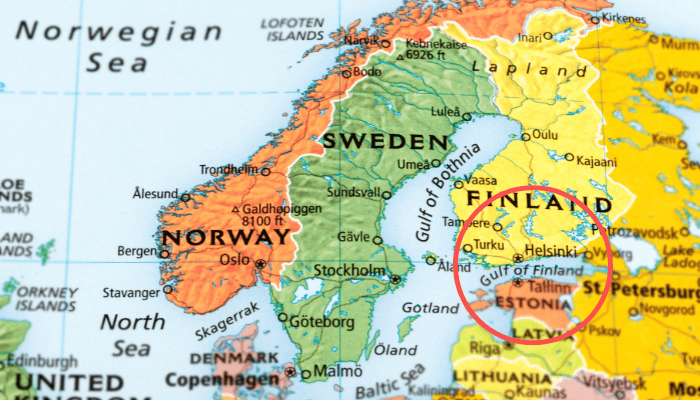
Its widest point lies near its entrance when it opens into the Baltic Sea. The narrowest point lies inland, close to Kotka, Finland. The Gulf of Finland is shallow, and the depth decreases from the entrance, with the sharpest change noticeable near Narva-Joesuu, a seaside resort town in Estonia, also called Narva Wall. The average depth is 38 m, while the maximum depth is 115 m.
2. Has Low Levels of Salinity and Freezes Completely in Winter
Several rivers, especially the Neva, which contributes at least two-thirds of the total runoff, drain into the Gulf of Finland. This explains the extremely low salinity, between 0.2 and 0.3% at the surface and 0.3 to 0.5.% at the bottom.
The water temperature is around 0 °C in winter, and the surface temperature is 15 to 17 °C in summer. Some portions of the Gulf freeze from the end of November and remain frozen till April ends.
This freezing begins in the east and gradually progresses to the west, with complete freezing occurring by late January. Powerful western winds are frequent in the gulf, bringing massive waves and sometimes floods to coastal areas.
3. Gulf of Finland is lined with skerries and bays
The northern shores of the Gulf are high and winding. It also has many bays and small skerries and peninsulas. The coast is sloping with sandy dunes and pine trees.
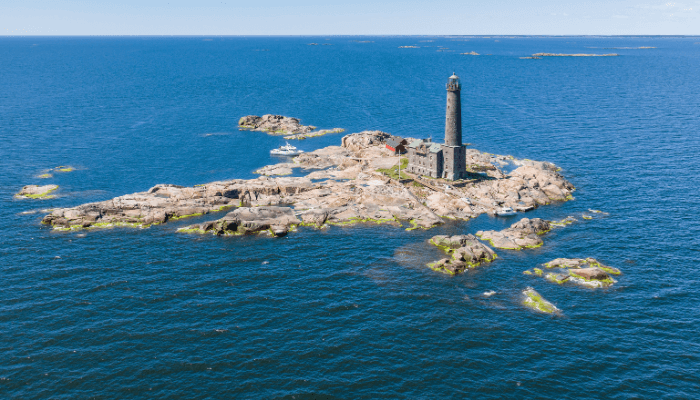
The southern coast is smooth and shallow, and along it runs the Baltic Klint, a limestone escarpment that is 55 m high. Towards the east is the Neva Bay, and in the west lies the Baltic Sea.
4. Surrounded by many islands, Kotlin being the largest
Many islands are near the Gulf of Finland, the largest being Kotlin. The Russian island is 32 km west of St.Petersburg in the Baltic Sea. It separates Neva Bay from the gulf. It is famous for the fortified city of Kronstadt, which is on the island and part of a World Heritage Site.
The island has been the site of many military battles. In 1921, the Kronstadt rebellion occurred here, leading to more than 11,000 casualties. It is mentioned in the 13th-century Treaty of Novgorod with the Hanseatic League and Gotland.
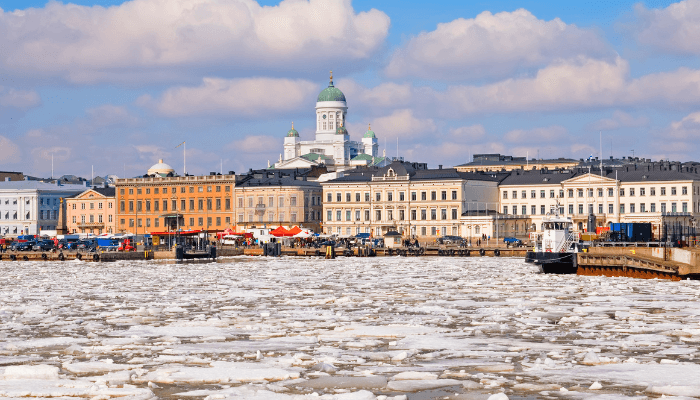
Another popular island group is the Beryozovye Islands in Leningrad, Russia. They lie at the gulf’s head outside Primorsk on the Karelian Isthmus. The group has 15 islands, the biggest called Bolshoy Beryozovy.
The other islands are Lisiy Island, Vysotsky Island, Bolshoy Tyuters, Moshtchny, Naissaar, Kokar, Pakri Islands, Sommers and others.
Also, in 1700, Russia built around 19 artificial islands with forts along the Gulf. These were constructed to defend the country from maritime attacks during the Great Northern War of 1700 to 1721. Some fortresses include Krasnaya Gorka, Totleben, Fort Alexander and Kronshlot.
5. Gulf of Finland is an important Shipping Corridor
The Gulf of Finland is a vital shipping lane for Finland, Russia and Estonia. Many ports lie in the Gulf, such as the Port of St.Petersburg, which handles approximately 59,990,000 tonnes of cargo annually, including oil, timber, metals, coal, ores, grains, etc. It also handles 2,365,000 TEU and 411,920 passengers.
Helsinki is another port lying on the southern coast of Finland at the mouth of the Vantaa River in the Gulf of Finland. It is an international port and one of the busiest passenger ports in Europe. It deals with raw materials, consumer products, industrial and steel products, forestries and glassware.
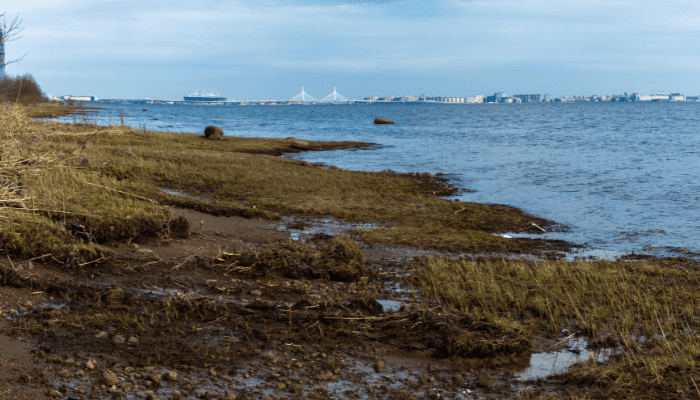
Around 8740 ships and 14,000,000 tonnes of cargo, including 400,000 TEU and 10,000 passengers, are handled at the port annually.
Tallinn is the capital of Estonia and lies on the southern coast of the Finnish Gulf in the Baltic Sea.
There are 25 berths with a depth of 10.7 m and four passenger terminals. The main cargo handled are coal, cement, cars, grain, oil, metals, general cargo, etc. Around 6700 ships, 33,200,000 tonnes of cargo, including 140,000 TEU and 7,300,000 passengers, are handled annually here.
6. A diverse fishing ground with many different types of fish
The Gulf of Finland has abundant fish, and the average water depth is less than 10 m, with zander, pike and perch as the main species. There are several spots with shallow bay waters for catching a big pike weighing over 10 kilos. One such spot is in Pernajanlahti Bay and the Tammisaari Archipelago.
Great Zander zones include Sipoo and the waters near Helsinki. Usually, zanders are small and weigh less than a kilo. In winter, zander ascends into rivers like Porvoonjoki.
Sea Trout can be seen in the outer archipelago of the Gulf of Finland. Beyond the archipelago, one can find salmon, while Perch is common throughout the Gulf.
Other fish in the Gulf of Finland are European chub, European smelt, stickleback, lamprey, Atlantic Cod, Baltic Herring and European eel.
In recent years, spring angling for whitefish has gained immense popularity. One can go after whitefish in March and April, just when the ice breaks up. Sandy areas near bridges are ideal places where you can find whitefish, which usually weigh 500-700 grams, but you might seldom find larger ones, too.
The catch has been affected over the years due to contamination of the waters by mercury, phenols, petroleum products, pesticides and polycyclic aromatic hydrocarbons, which pose a serious threat to the ecosystem of the Gulf and its fish population.
7. Coastal waters of the gulf have a wide range of vegetation
Several species of higher vascular plants can be found in the coastal regions of the Gulf of Finland. The shallow waters are home to aquatic plants like spiny naiad and ditch grass. The eastern portion of the gulf is characterised by wetland vegetation, marshes made of common reeds, bulrush, acute sedge, and yellow and white water lilies.
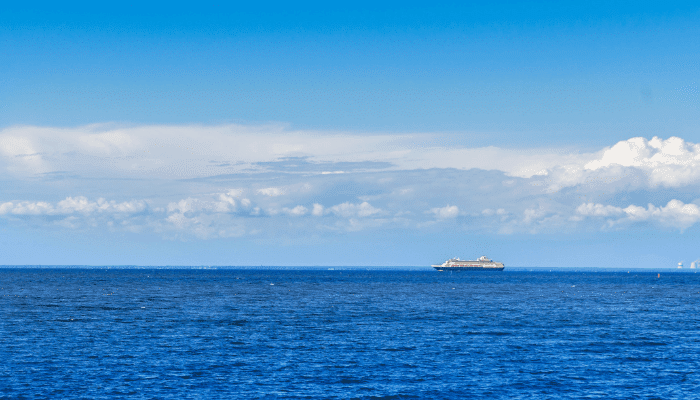
The coast and islands are lined with a mixture of pine and spruce forests and deciduous forests made of birch, aspen, black and grey alders, and willow.
8. The Gulf of Finland is called the largest ship cemetery in the world
The gulf’s bottom is home to many lost ships and sunken treasures. Due to low salinity, cold water and the absence of shipworms, vessels are well preserved.
The Gulf of Finland has been a major waterway since the 6th century, and from the 8th to the 10th centuries, around 3000 tonnes of silver passed from here. It became a busy shipping lane and a place for several naval engagements.
After the Russo-Swedish war ended, the areas around the Gulf of Finland and Neva River were given to Russia.
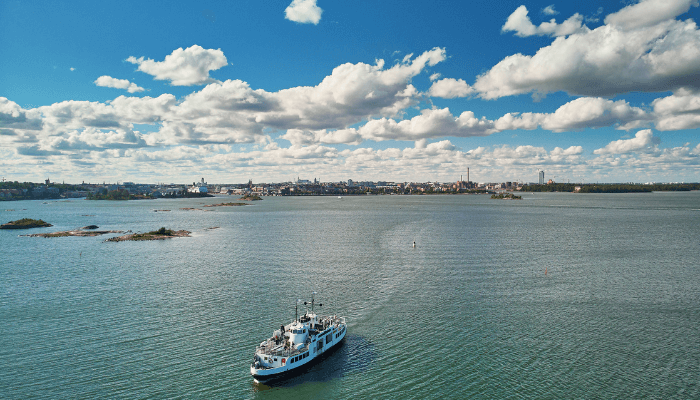
With advancements in technology and an interest in unfolding the contents of the wrecks, many were interested in exploring the Gulf. By 1996, around 5000 submerged objects were found in the Russian section.
There were 2500 vessels, 1500 planes, boats, tanks, cannons, mines, aerial bombs, cars, etc. The ships mostly belonged to the UK, Finland, Germany, Sweden, the Netherlands and Russia.
9. Many ancient sites were found on the Gulf of Finland shores
Archaeologists discovered sites dating back to 9000 years old along the gulf. Humans inhabited the gulf’s coasts after the ice age glaciers retreated and Littorina Sea levels decreased, revealing land. Remains of eleven neolithic settlements have been found since 1905 at the mouth of Sestra River. Several arrow tips, quartz scrapers, utensils and fire traces were found.
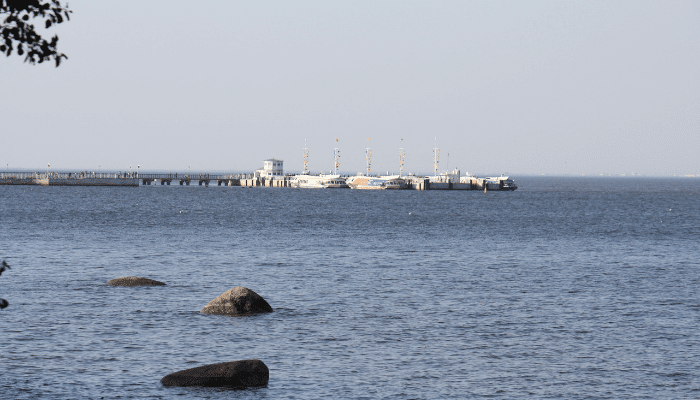
The Gulf Coast was then inhabited by Finnish people and also Estonians. There were many tribes, too, that settled to the west of Ladoga Lakes and practised slash-and-burn agriculture, hunting, fishing, and animal husbandry. From the 8th-13th century, the Gulf of Finland and Neva were important waterways from Scandinavia to the Byzantine Empire.
10. Formed 10,000 Years Ago at the end of the Last Ice Age
During the Last Ice Age, which ended 10,000 to 12000 years ago, most of Northern Europe and Northern Asia was engulfed in ice sheets. As the climate became warmer towards the end of the Ice Age, the ice sheets melted and receded northwards. The depressed land surface started to rebound upwards due to isostatic adjustment since the weight of the ice was removed.
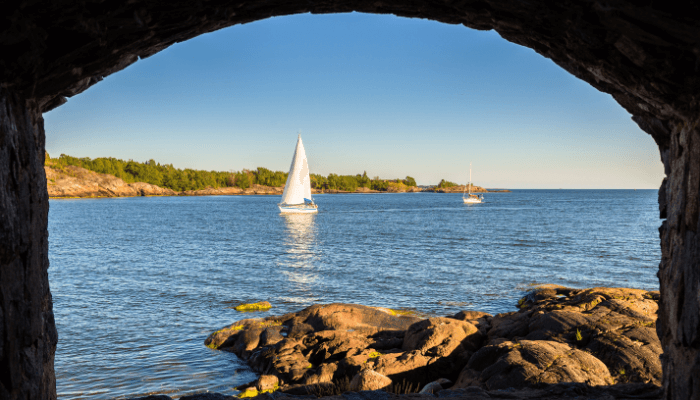
Sea levels increased after the glacial ice melted, and the water from the ice sheets flooded the basins created by the retreating ice sheets. One basin was the Gulf of Finland, which slowly expanded as sea levels rose. By 8000 BC, the Gulf of Finland took pretty much the same shape it has today, though the geological process continue.
You might also like to read-
- 10 Major Gulf of Oman Facts
- 10 Top Eco-Friendly Cruise Ships
- Are Polar Waters Navigable – 10 Things You Should Know
- 2 Major Ports in East Timor
- 5 Major Ports In Antigua And Barbuda
Disclaimer :
The information contained in this website is for general information purposes only. While we endeavour to keep the information up to date and correct, we make no representations or warranties of any kind, express or implied, about the completeness, accuracy, reliability, suitability or availability with respect to the website or the information, products, services, or related graphics contained on the website for any purpose. Any reliance you place on such information is therefore strictly at your own risk.
In no event will we be liable for any loss or damage including without limitation, indirect or consequential loss or damage, or any loss or damage whatsoever arising from loss of data or profits arising out of, or in connection with, the use of this website.
Do you have info to share with us ? Suggest a correction
Disclaimer :
The information contained in this website is for general information purposes only. While we endeavour to keep the information up to date and correct, we make no representations or warranties of any kind, express or implied, about the completeness, accuracy, reliability, suitability or availability with respect to the website or the information, products, services, or related graphics contained on the website for any purpose. Any reliance you place on such information is therefore strictly at your own risk.
In no event will we be liable for any loss or damage including without limitation, indirect or consequential loss or damage, or any loss or damage whatsoever arising from loss of data or profits arising out of, or in connection with, the use of this website.

About Author
Zahra is an alumna of Miranda House, University of Delhi. She is an avid writer, possessing immaculate research and editing skills. Author of several academic papers, she has also worked as a freelance writer, producing many technical, creative and marketing pieces. A true aesthete at heart, she loves books a little more than anything else.
Latest Maritime Knowledge Articles You Would Like:
Subscribe To Our Newsletters
By subscribing, you agree to our Privacy Policy and may receive occasional deal communications; you can unsubscribe anytime.















